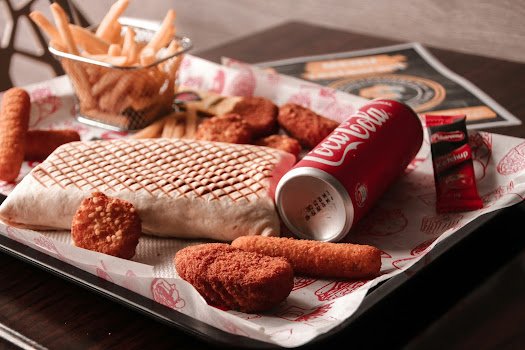Really, How Bad Are Ultraprocessed Foods?
They are undoubtedly connected to ill health. However, scientists are still learning the reasons behind this.
MAY 13,2024
NR.BALOCH
Brazilian nutritional epidemiologist Carlos Monteiro saw a concerning trend in the mid-1990s: childhood obesity rates were sharply growing in his nation.
He and his colleagues at the University of São Paulo examined data on Brazilian households’ food purchasing habits to determine if they had altered recently in order to comprehend why. Researchers discovered that consumers were buying more processed goods including sodas, sausages, instant noodles, packaged breads, and cookies and less sugar, salt, cooking oils, and staple foods like grains and beans.
According to Dr. Monteiro, the researchers coined and defined the term “ultraprocessed foods,” or UPFs, to characterize that second category of food. Later, researchers in Brazil would connect UPFs to adult and pediatric weight increase.Since then, researchers have discovered links between UPFs and a variety of illnesses, such as depression, heart disease, Type 2 diabetes, obesity, gastrointestinal disorders, and obesity, in addition to an earlier mortality.
Experts believe that’s troubling because ultraprocessed foods are now a common component of diets all throughout the world. For example, in the United States, they make up 67% of the calories consumed by children and teenagers.
However, there are still a lot of unanswered questions. Exactly what are ultraprocessed foods? What is the strength of the evidence for their adverse effects? We posed these and other queries to specialists.
Ultraprocessed foods: what are they?
Dr. Monteiro and his colleagues created the Nova food classification system, so named because it combines the Portuguese and Latin words meaning “new,” in order to research foods according to their processing. Since then, researchers from all around the world have embraced it.Foods are categorized into four groups by the Nova system:
- foods such as fresh or frozen fruits and vegetables, beans, lentils, meat, chicken, fish, eggs, milk, plain yogurt, rice, pasta, maize meal, flour, coffee, tea, and herbs and spices that are either unprocessed or only slightly processed.
- processed items used in cooking, including butter, vinegar, sugar, honey, and cooking oils.
- processed foods created by mixing elements from Category 2 with those from Category 1 and preserving or altering them using comparatively easy techniques including baking, fermentation, canning, and bottling. This category include fish, beans, and vegetables in cans, most cheeses, and freshly baked bread. Preservatives that lengthen shelf life might be present in some foods.
- foods that have been ultraprocessed by the use of industrial techniques and non-grocery store products such as hydrogenated oils, concentrated proteins like soy isolate, and high-fructose corn syrup. They frequently have flavorings, colorings, or emulsifiers added to them to give them a more appealing and edible appearance. Consider energy drinks and sodas, candy, chips, flavored yogurts, margarine, lunch meats, hot dogs, sausages, chicken nuggets, boxed macaroni and cheese, most packaged breads, plant milks, meat alternatives, and cereal for breakfast.
According to Virginia Tech nutrition professor Brenda Davy, “if you look at the ingredient list and you see things that you wouldn’t use in home cooking, then that’s probably an ultraprocessed food.”Notably, the Nova method does not group foods according to nutrients such as fat, fiber, vitamins, or minerals. Maya Vadiveloo, an associate professor of nutrition at the University of Rhode Island, described it as “agnostic to nutrition.”
This has sparked a discussion among nutrition professionals regarding the usefulness of UPFs in characterizing a food’s healthfulness, in part because many of them, such as newborn formulae, flavored yogurts, and whole grain breads, can offer important nutrients, according to Dr. Vadiveloo.
Are meals with a lot of processing bad?
The majority of studies that relate UPFs to bad health are observational in nature, meaning that participants’ diets are asked about and their health is monitored over an extended period of time. Scientists found that drinking UPFs was linked to 32 health problems in a comprehensive assessment of research published in 2024. The strongest evidence was found for heart disease-related fatalities, Type 2 diabetes, and common mental health conditions like worry and depression.
According to Josiemer Mattei, an associate professor of nutrition at the Harvard T.H. Chan School of Public Health, these kinds of studies are important because they can examine large populations over the many years that it can take for chronic health conditions to develop. Results from almost 10 million people were included in the 2024 review. She continued by saying that she was more convinced than ever that there was a serious issue with the foods because of the persistent connection between UPFs and health problems.However, as noted by nutrition scientist and epidemiologist Lauren O’Connor, who previously held positions at the National Institutes of Health and the Department of Agriculture, the observational studies also have drawbacks. She acknowledged that there is a link between certain meals and chronic illnesses, but that doesn’t imply
Dr. O’Connor questioned the usefulness of combining such “starkly different” goods into a single category, such as breakfast cereals and Twinkies. There are some ultraprocessed food kinds that are obviously more dangerous than others, such as drinks and processed meats. On the other hand, UPFs such whole grain breads and flavored yogurts have been linked to a lower risk of Type 2 diabetes.According to Dr. O’Connor, clinical trials are required to determine whether UPFs directly cause health issues. There has only been one small-scale research of this kind, with certain limitations, she noted.
Twenty persons with a variety of body types spent four weeks living in a research hospital at the National Institutes of Health as part of the 2019 study. They mostly consumed food for two weeks.
Why could UPFs be detrimental?
Dr. Hall stated that there are “strong opinions” on the health risks associated with ultraprocessed meals. He went on, “But there’s actually not a lot of rigorous science” regarding the nature of those systems.UPFs are definitely replacing healthier foods in our diets because they are frequently affordable, easily accessible, and convenient, according to Dr. Hall.
Picture
On a drab backdrop, dried ramen noodles are piled on top of one another.
Give credit…For The New York Times, Casey Zhang
However, he and other scientists believe that the meals may be impacting health more directly. They are high in calories, simple to chew, and contain tempting mixtures of carbohydrates, sugars, fats, and salt, which may contribute to their tendency to be overindulged. Additionally, it’s likely that the ensuing surges in blood sugar may
However, the majority of researchers believe that the foods are harmful in a variety of ways. According to Dr. Vadiveloo, “there is rarely a single factor in nutrition that fully explains the relationship between foods and some health outcome.”
In regards to ultraprocessed foods, what should we do?
Dr. Monteiro was involved in the 2014 Brazilian Dietary Guidelines, which recommended avoiding highly processed foods.Several nations, including Israel, Canada, and Mexico, have also made it clear that consuming too few or no UPFs, or “highly processed foods,” is advised. Such recommendations are not included in the U.S. dietary guidelines, but the 2025 standards may change as a result of an advisory committee’s investigation into the data about UPFs’ potential to influence weight gain.
According to Dr. Hall, there is a lack of knowledge regarding UPFs in the US, as a large portion of food is already ultraprocessed and those with lower incomes may be more reliant on them.
“Food is food at the end of the day, and they are a significant source of it,” Dr. Mattei continued. She remarked, “We really can’t demonize them.”
Though research on UPFs is ongoing, opinions among experts range on how individuals should use them. According to Dr. Monteiro, the best course of action is to stay away from them completely. For example, you can replace flavored yogurt with plain yogurt and fruit, or if you can afford it, you can get a fresh loaf of bread from a nearby bakery in place of packaged goods.
Dr. Vadiveloo recommended a more measured approach that concentrated on reducing UPFs that don’t offer beneficial nutrients, like as soda and cookies. Increased consumption of fruits, vegetables, whole grains—whether processed or not—legumes, nuts, and seeds were other suggestions made by her.Dr. Davy advised cooking as much as possible at home with minimally processed foods. “Right now, we’re not really able to say much more than that.”
A Handbook for Enhancing Nutrition
- Ultraprocessed foods have a direct correlation to ill health. However, scientists are still learning the reasons behind this.
- According to aging specialists, animals that restrict their caloric intake and undergo intermittent fasting live longer. What that means to you is as follows.
- “Oatzempic,” a half-cup portion of rolled oats combined with a cup of water and the juice of half a lime, is promoted as a weight-loss trick on a popular TikTok video. If there was anything to it, we questioned the specialists.
- There is sodium in everything that we eat. How much salt, though, is too much?
- For years, doctors advised patients that calorie restriction might lessen polycystic ovarian syndrome symptoms. However, studies imply that dieting might not be very helpful.



